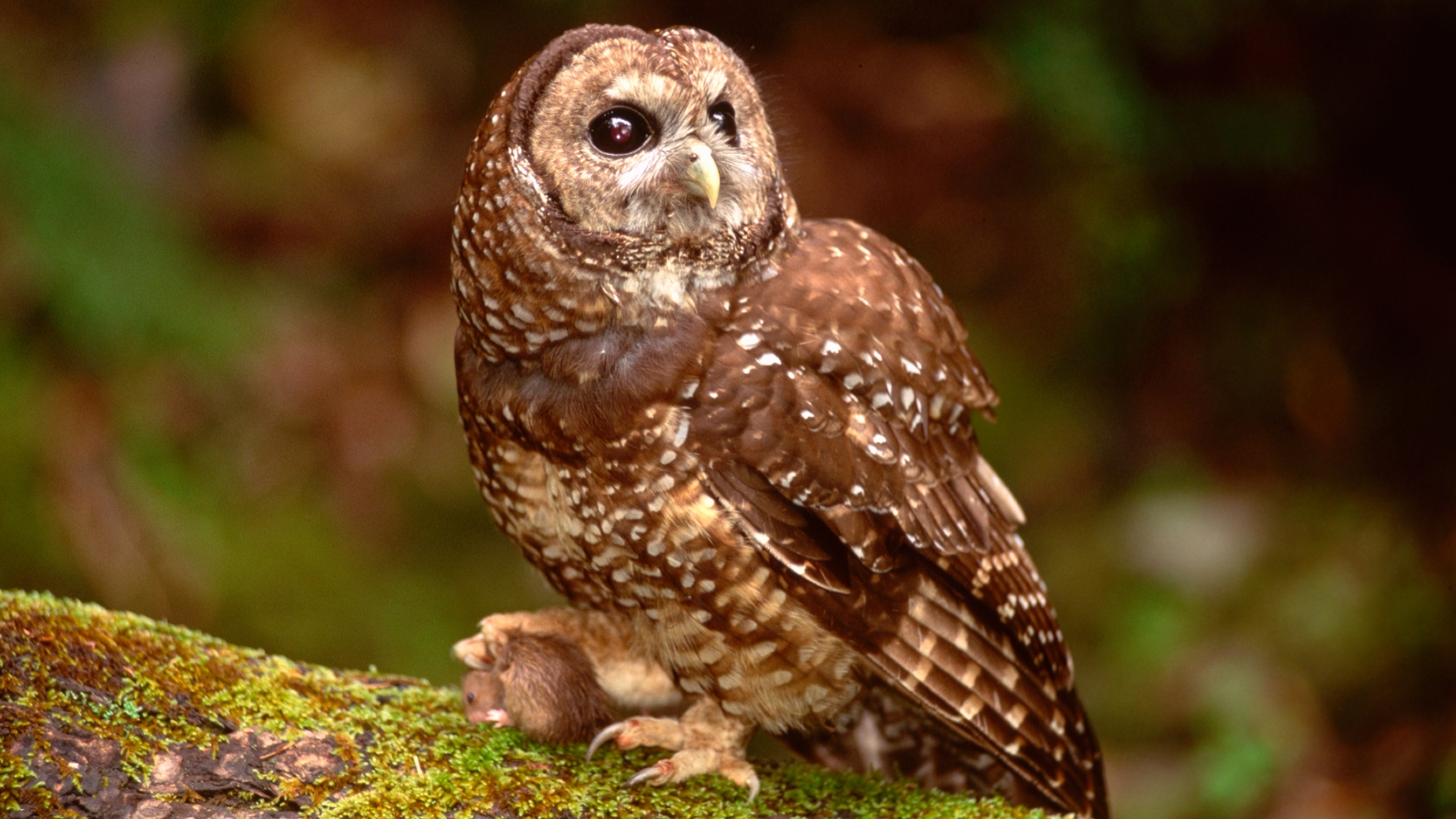Nearly half a million 'invasive' owls, including their hybrid offspring, to be killed by US
The U.S. Fish and Wildlife Service has released a final proposal to kill around 450,000 invasive barred owls in the Northwest, in an attempt to save two native species.

U.S. wildlife officials plan to kill nearly half a million "invasive" American owls over three decades, new documents confirm. Experts say the cull is needed to help protect two native owl species, which have been put under threat from the invaders. However, animal rights activists have condemned the plan as cruel and unnecessary.
Barred owls (Strix varia) are large owls native to eastern North America. In the early 20th century, these owls started moving west of the Mississippi River following "human-induced changes" to the Great Plains and northern boreal forest, according to the U.S. Fish and Wildlife Service (FWS). As a result, the owls have gained a stronghold in Washington, Oregon and California, where they are considered an invasive species.
The arrival of barred owls in the Northwest has adversely affected two native owl species — northern spotted owls (Strix occidentalis caurina) and California spotted owls (Strix occidentalis occidentalis) — which are both much smaller than the invaders and are being outcompeted for food and territory. Both native species have also been impacted by extreme logging activity over the last few decades, which has majorly reduced their range, according to California's Santa Clara University.
Barred owls have also started mating with the spotted owls, creating hybrids that have the potential to reduce the gene pool of the spotted owl species.
The northern spotted owl population has declined severely over the past few decades, and the species is now outnumbered by barred owls across most of its range. The species is currently listed as threatened in the Endangered Species Act (ESA), which means the FWS is obligated to help protect the species. The FWS has also proposed that California spotted owls should be added to the ESA list because their numbers are also starting to decline.
On July 3, the FWS released its final Proposed Barred Owl Management Strategy following the completion of a public comment process. The documents reveal that the agency aims to remove around 450,000 barred owls, including barred-spotted owl hybrids, over a 30-year period. The plan could be officially confirmed by the end of this year.
Related: 10 times humans messed with nature and it backfired
Get the world’s most fascinating discoveries delivered straight to your inbox.

This may sound like a huge number of owls. However, the cull will remove less than 1% of barred owls' predicted U.S. population during the proposed time frame, resulting in fewer casualties than other, more aggressive management options proposed by the FWS, which suggested culling almost twice as many of the birds. The cull will also be limited to around half the areas where barred and spotted owls overlap.
Officials hope this approach will help northern spotted owl populations recover and stop barred owls from spreading further south, which will safeguard California spotted owls. However, the plan should also enable barred owls to remain in the Northwest.
"It's not about one owl versus another," Kessina Lee, an FWS state supervisor in Oregon, said in a statement.
The cull will only be carried out by licensed hunters, and members of the public will not be permitted to shoot barred owls. The FWS report also notes that lead ammunition will not be used in the cull because of its impact on the environment.

However, not everyone is happy with the FWS plan.
In March, when a draft of the new management strategy was released, a group of at least 75 wildlife protection and animal welfare organizations wrote an open letter condemning the plan, labeling it as "colossally reckless" and "doomed to fail."
The critics believe that barred owls are being punished for human actions that enabled them to expand their range. They also note that owls are a notoriously hard animal to hunt, which could lead to cases of mistaken identity, where the wrong owl species and other forest animals are killed. As a result, these organizations suggest pursuing a non-lethal control approach. However, they did not specify what this alternative approach would be.
However, FWS officials say the cull is the best thing for all the species involved.
"Barred owl removal, like all invasive species management, is not something the service [FWS] takes lightly," Lee said in the statement. The service also has a legal responsibility to protect listed species, which spotted owls are and barred owls are not, she added.

Harry is a U.K.-based senior staff writer at Live Science. He studied marine biology at the University of Exeter before training to become a journalist. He covers a wide range of topics including space exploration, planetary science, space weather, climate change, animal behavior and paleontology. His recent work on the solar maximum won "best space submission" at the 2024 Aerospace Media Awards and was shortlisted in the "top scoop" category at the NCTJ Awards for Excellence in 2023. He also writes Live Science's weekly Earth from space series.


